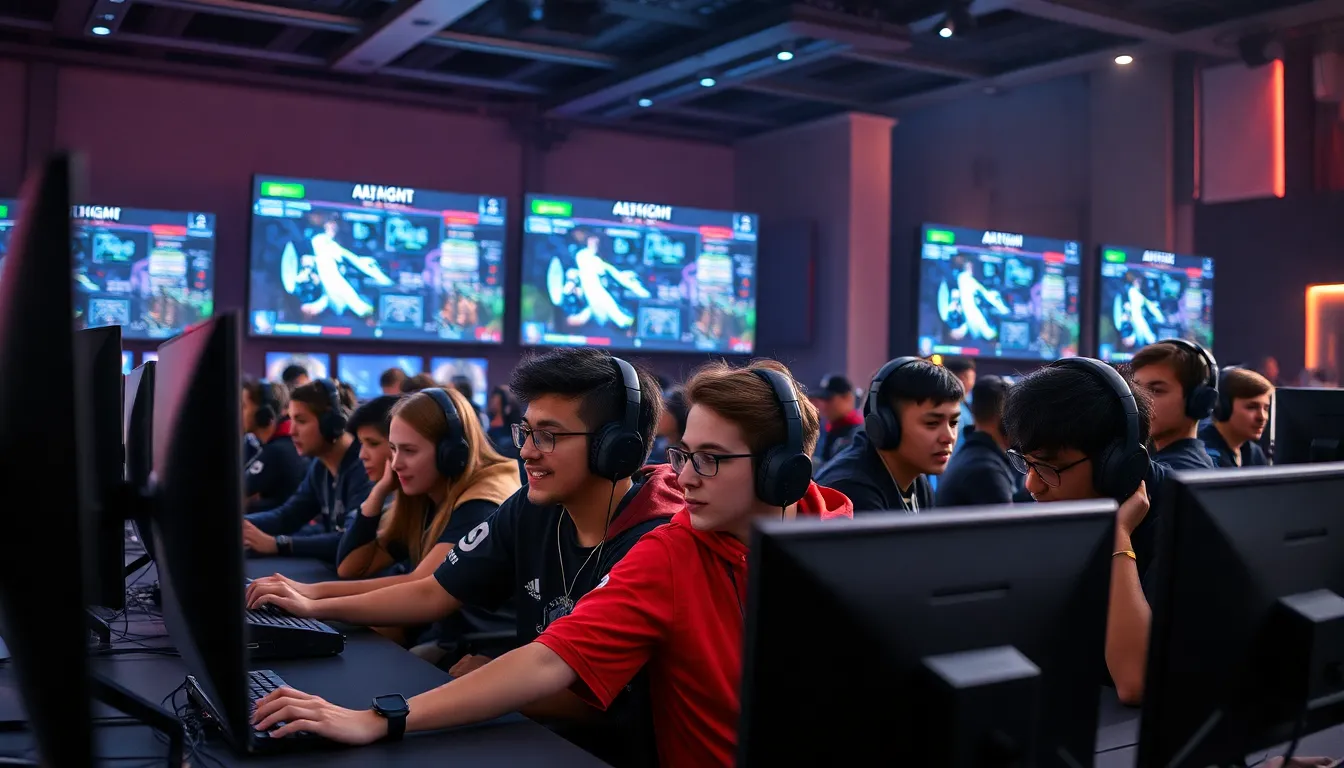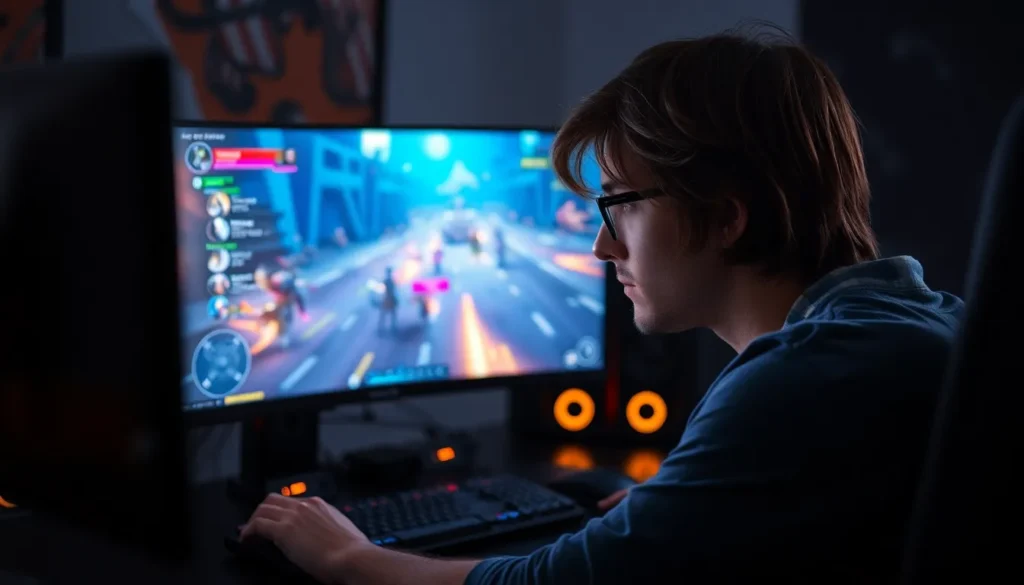Table of Contents
ToggleIn the high-stakes world of competitive gaming, teamfight analysis can be the difference between victory and defeat. Picture this: your team is on the brink of glory, but a single misstep could send you spiraling into the depths of defeat. Understanding the nuances of each skirmish is crucial. It’s like a chess match on steroids—strategy meets chaos, and only the sharpest minds can navigate the battlefield.
Overview of Teamfight Analysis
Teamfight analysis plays a crucial role in determining competitive gaming outcomes. Players must dissect each skirmish meticulously. This analysis involves assessing positioning, ability usage, and target selection during engagements. Players who excel understand the timing of initiating fights and disengaging as necessary.
Recognizing strengths and weaknesses of both teams enhances strategic decision-making. Focusing on enemy cooldowns provides insights into optimal attack windows. Observing how teams coordinate their abilities affects overall performance in teamfights.
Successful teamfight analysis includes learning from past encounters. Players who review recordings of their matches can identify mistakes and adjust strategies accordingly. Compiling statistics from various teamfights can also reveal patterns that guide future gameplay.
Understanding team compositions matters significantly during engagements. Each character or champion brings unique advantages, altering the dynamics of a fight. Prioritizing heroes based on their synergy and counter effects improves team coordination.
Lastly, effective communication remains fundamental throughout teamfights. Ensuring that all teammates are on the same page increases the likelihood of success. Players gain competitive edges by refining strategies and collaborating effectively, ultimately elevating their gameplay to new heights.
Importance of Teamfight Analysis

Teamfight analysis plays a crucial role in determining match outcomes in competitive gaming. By understanding specific skirmish dynamics, players can avoid costly mistakes and increase their chances of victory.
Strategic Decision Making
Strategic decision making requires careful consideration of positioning and ability usage during engagements. Players must analyze data from prior matches to develop informed choices in real-time. Timing and target selection become essential, as identifying weaknesses in enemy formations presents opportunities for effective attacks. Evaluating champion synergies enhances team composition, ensuring players prioritize actions that amplify overall team effectiveness. Successful teams often employ strategies based on historical performance, adapting their tactics to counter opponent strengths.
Performance Evaluation
Performance evaluation serves as a tool for improvement in team dynamics. Reviewing past match recordings provides insights into individual contributions and team interactions. Compilation of statistics reveals patterns that help players identify trends and areas needing attention. Consistent reflection on gameplay allows teams to make adjustments in strategies and coordination. Analyzing cooldown management fosters smarter engagement decisions, maximizing potential during critical moments. Ultimately, focused evaluation encourages ongoing development and promotes more effective teamwork in future encounters.
Key Components of Teamfight Analysis
Analyzing teamfights involves several critical components that can influence match outcomes significantly. Each aspect demands attention to detail and strategic foresight.
Positioning and Movement
Positioning plays a vital role in teamfight success. Players must maintain optimal distances from threats while creating opportunities for their team. Movement during an engagement can dictate the flow of battle. Maintaining advantageous terrain or flanking the enemy enhances impact. Recognizing when to reposition helps evade danger or capitalize on openings. Teams benefit from tight formations that allow for quick responses to threats. Effective positioning often leads to more decisive victories.
Ability Usage and Timing
Efficient ability usage can change the course of a teamfight. Players need to understand their heroes’ cooldowns and resource management. Timely deployment of abilities maximizes their effect, potentially taking out opponents or providing team support. Prioritizing ultimate abilities at crucial moments can sway engagements in a team’s favor. It’s essential to anticipate enemy actions and respond accordingly. Proper timing can disrupt enemy strategies while amplifying a team’s offensive capabilities.
Target Priority
Determining target priority is critical for maximizing damage output. Players should focus on high-value targets, often squishy champions or those with significant threat levels. Communication within the team allows for coordinated attacks on major threats. Adjusting target selection based on enemy position and ability availability enhances effectiveness. Prioritization not only impacts individual success but can also dictate the outcome of team engagements. Understanding the dynamic of enemy compositions helps in making strategic decisions during combat.
Tools and Techniques for Teamfight Analysis
Utilizing the right tools enhances the effectiveness of teamfight analysis, leading to improved performance. Employing both in-game analysis tools and post-game review software helps players dissect their strategies and refine gameplay.
In-Game Analysis Tools
In-game analysis tools provide real-time data to players during matches. These tools track key metrics like positioning, ability cooldowns, and damage output. Many programs offer overlays that display crucial statistics without disrupting gameplay. Players can assess their movements and decision-making as battles unfold. Tools like action maps visualize team positions, allowing quick identification of gaps or threats. Additional features may include alerts for important cooldowns and alerts to facilitate timely actions. Successful usage of these tools translates into more strategic engagements and informed reactions in intense situations.
Post-Game Review Software
Post-game review software plays a vital role in improving teamfight tactics. Reviewing matches through these programs reveals intricate details about performance. Players can analyze their decision-making processes, positioning flaws, and ability usage. Many popular tools provide breakdowns of fights, highlighting both successful and unsuccessful engagements. In addition, statistics generated from past matches help teams identify patterns in enemy behavior. Collaborative reviews foster discussions that encourage strategy alterations for future games. Regular usage of this software allows teams to track their improvement and focus on areas needing enhancement.
Conclusion
Mastering teamfight analysis is essential for achieving success in competitive gaming. It empowers players to make informed decisions that can turn the tide of a match. By focusing on positioning ability usage and target selection teams can optimize their strategies and enhance coordination.
Utilizing analysis tools and engaging in post-game reviews further sharpens players’ skills and understanding of their performance. This ongoing commitment to improvement fosters a culture of teamwork and adaptability. Ultimately effective teamfight analysis not only leads to better individual performance but also strengthens overall team dynamics paving the way for consistent victories.







